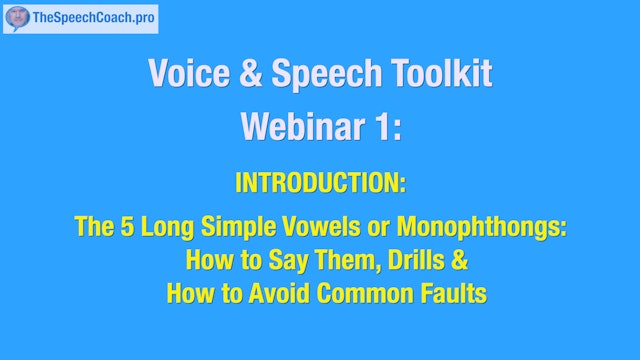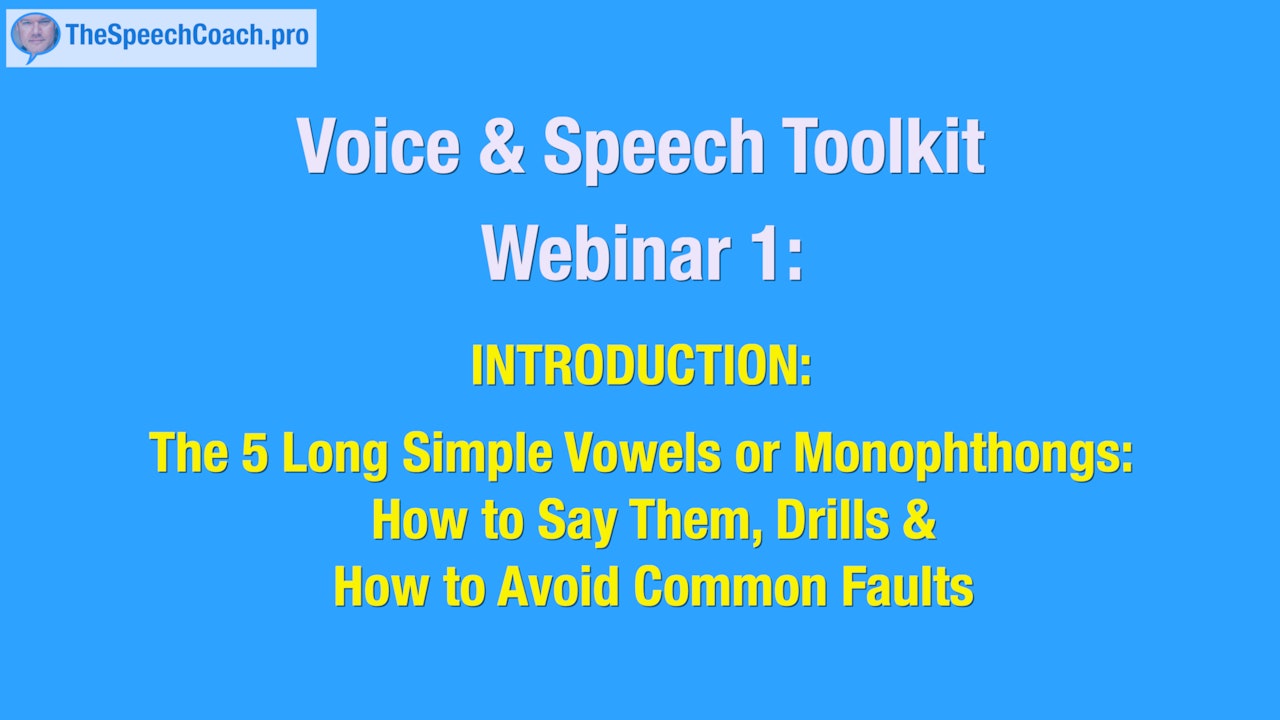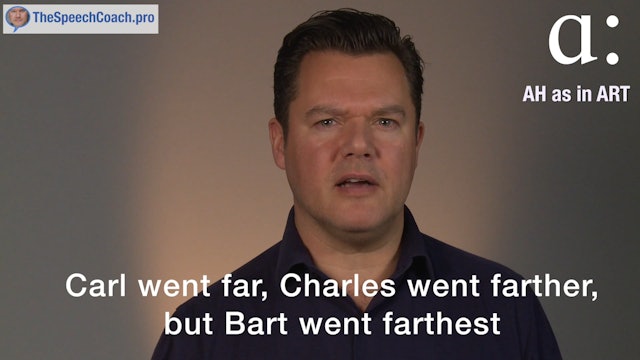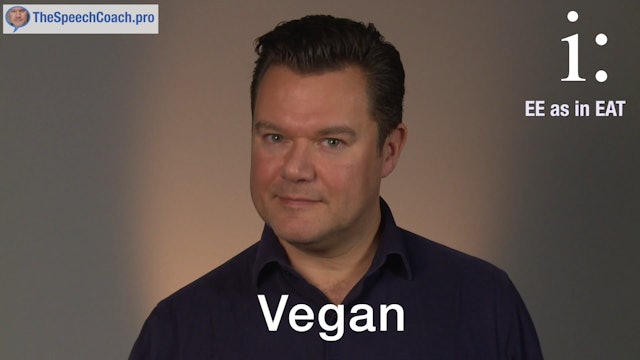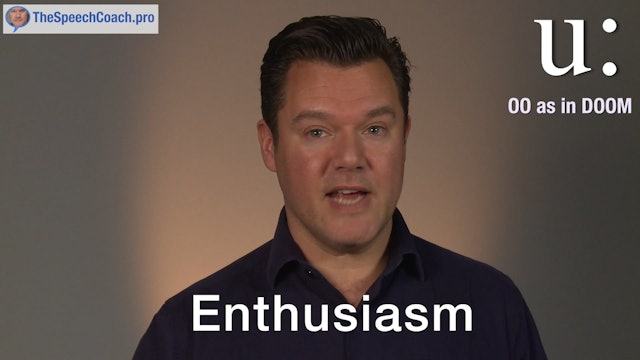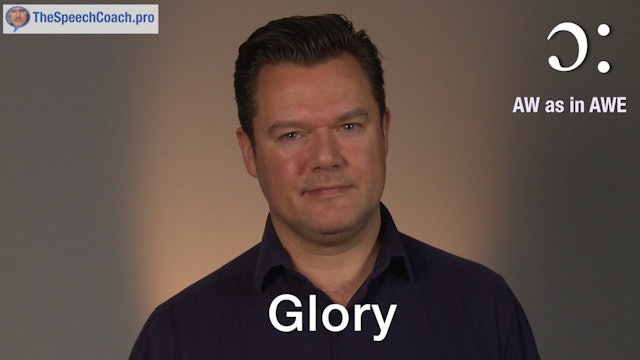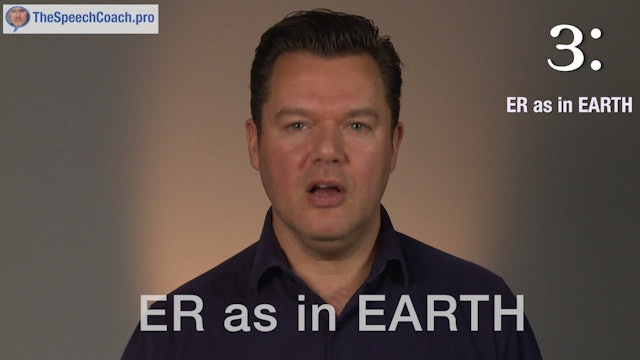1: The 5 Long Simple Vowels or Monophthongs
In this webinar, we will mainly focus on the five long simple vowels or monophthongs. But during certain exercises, I will also refer to elements that we will cover in more detail in future webinars. For example, I might ask you to listen out for certain consonant sounds. Or draw your attention to common faults or mistakes.
So, with all the exercises, try to repeat everything you hear and not just the vowel sounds. As we go along, you will notice that English spellings are often very confusing and unhelpful when it comes to correct pronunciation. So I will try to offer as many different spelling variations of the same vowel sounds as I can.
I also recommend that you familiarize yourself with the basics of the International Phonetic Alphabet. I will show you the phonetic symbols for each sound in standard British, English pronunciation as we go. The Longman Pronunciation Dictionary is also an invaluable reference.
Monophthongs are single sounds. Eventually, we will learn those vowel sounds which are made up of two or three different sounds. But we will start with these five long simple vowels. These are very good to start with because we can make them last as long as we wish. And they will still sound correct.
-
001 AH as in ART
AH is the most open of all the vowel sounds – your jaw is open, your lips are open, and the back of your mouth is open. Rest the tip of your tongue against the backs of your bottom front teeth and gently open your jaw.
Relax your lips. Your tongue will pull back a little and you will feel the so...
-
002 EE as in EAT
For the EE sound we keep the tip of the tongue where it was for AH, behind your bottom front teeth. Our jaw is less open than it was for AH, our lips are once again relaxed and we arch our tongue upwards and this gives us EE as in EAT.
-
003 OO as in DOOM
The OO sound needs a relaxed tongue but your lips should be rounded and pushed forward as though you’re about to whistle.
You will feel your jaw is nearly closed and that the back of your tongue lifts up towards your soft palate – this is the movable part of the roof of your mouth that raises wh...
-
004 AW as in AWE
For the AW sound, the lips are still pushed forward but not so far forward as they were for OO. Your lips should be slightly rounded and the lip muscles should be engaged. The back of the tongue still comes up but it is much lower than it was for OO.
-
005 ER as in EARTH
For the ER sound, relax your lips, allow your jaw to be half-open and feel that the centre of your tongue lifts up a little bit.
A common fault with this sound is that it can be mispronounced in a way that pushes it closer to the AH vowel – so “girl” becomes “garl”. To avoid this, relax your lip...
